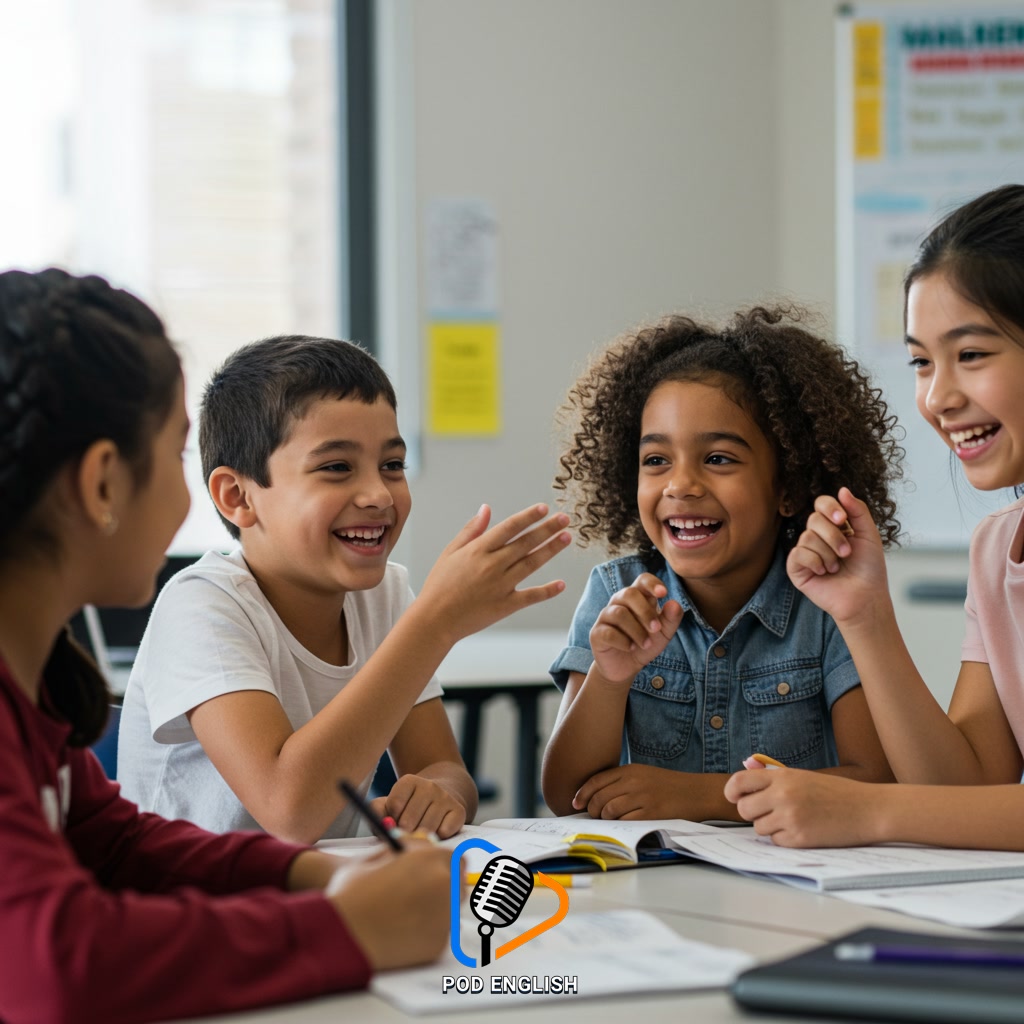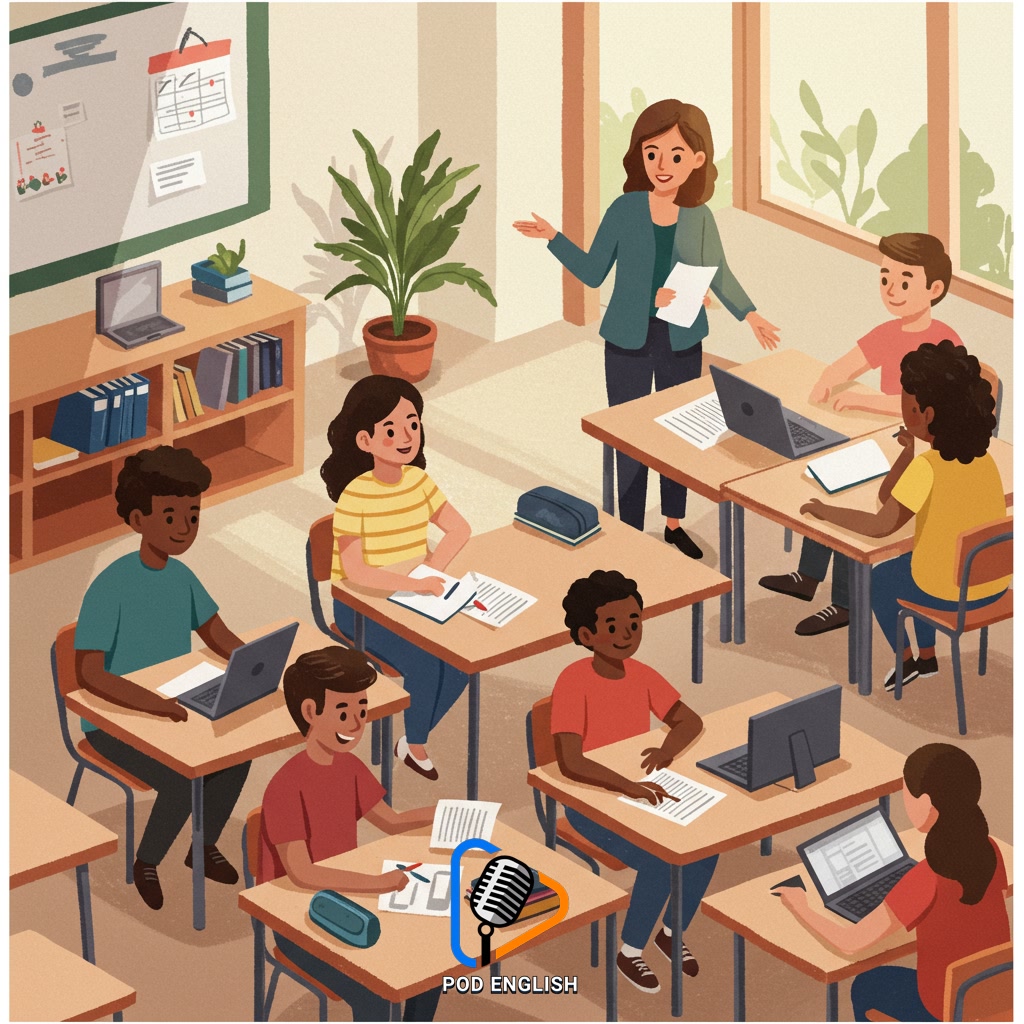Learn English
Collaborative Learning Boosts English Student Engagement

Collaborative learning is a powerful strategy for increasing student engagement in the process of learning English. When students collaborate, they actively participate, communicate, and practice language skills in a supportive environment. This interactive approach makes the learning experience more dynamic and meaningful. Consequently, increased engagement through collaboration can lead to better proficiency and motivation for students dedicated to learning English.
Table of Contents
- Section 1: Introduction: Defining Collaborative Learning in English Education
- Section 2: The Role of Engagement in Successful English Language Learning
- Section 3: Mechanisms: How Collaboration Boosts Student Engagement
- Section 4: Effective Collaborative Activities for English Learners
- Section 5: Implementing and Managing Collaborative Learning Environments
- Section 6: Measuring the Impact on Engagement and Learning Outcomes
- Section 7: Conclusion: Future Directions for Collaborative English Learning
Section 1: Introduction: Defining Collaborative Learning in English Education
Collaborative learning in English education involves students working together in small groups or pairs to achieve a shared learning goal. Unlike traditional lectures or individual study, this approach emphasizes interaction, discussion, and mutual support. When students collaborate, they actively use English to communicate their ideas, ask questions, clarify concepts, and practice language skills in a dynamic setting. This process helps learners build confidence, improve fluency, and gain deeper understanding through peer interaction and diverse perspectives. By pooling their knowledge and skills, students create a supportive environment where they can practice speaking, listening, reading, and writing in English in a more authentic and engaging way than learning alone.

Section 2: The Role of Engagement in Successful English Language Learning
Engagement is absolutely vital for making progress when learning English. When you are truly engaged, you are actively involved in the learning process, paying close attention and investing your energy. This deep involvement helps your brain absorb new vocabulary, grammar rules, and pronunciation more effectively. It makes practice feel less like a chore and more like an interesting activity. High engagement also boosts your motivation to keep learning, even when facing challenges. Essentially, being engaged transforms learning from a passive task into an active, dynamic, and rewarding experience, which significantly accelerates your journey towards English fluency.

Section 3: Mechanisms: How Collaboration Boosts Student Engagement
Building on the idea that engagement is key, collaborative learning provides specific pathways to achieve this. When students work together on tasks, they are compelled to actively use English – speaking, listening, and negotiating meaning with peers. This direct interaction prevents passive learning by requiring constant participation and immediate application of language skills. Furthermore, the group setting often creates a more relaxed and supportive atmosphere, lowering the fear of making mistakes compared to solo work or whole-class interaction. Working towards a common goal with others also fosters a sense of belonging and shared responsibility, significantly boosting motivation and sustained effort in learning English by making the process more dynamic and less intimidating.

Section 4: Effective Collaborative Activities for English Learners
Effective collaborative activities are specifically designed to get English learners actively using the language. Simple pair work or small group discussions are fundamental, encouraging speaking and listening practice in a low-pressure environment. More structured tasks like problem-solving games, role-playing scenarios, or planning a simple project together require learners to negotiate meaning, use specific vocabulary, and practice complex sentence structures. Activities such as jigsaw reading, where students share information from different texts, or collaborative writing tasks also build essential skills. The key is that these activities create genuine reasons for students to communicate in English, making the learning process dynamic and directly applicable. They move beyond passive learning, fostering active engagement and practical language application.

Section 5: Implementing and Managing Collaborative Learning Environments
Moving beyond simple activities, effectively implementing collaborative learning requires thoughtful planning and management. Teachers must structure groups appropriately, considering factors like language proficiency levels and personalities to ensure balanced participation. Clear instructions, defined roles within groups (e.g., note-taker, presenter), and specific learning objectives for each task are essential. Providing accessible resources, whether physical handouts or digital tools, supports student interaction. During the activity, the teacher acts as a facilitator, monitoring groups, offering timely guidance, and encouraging communication. Establishing a classroom culture where collaboration is valued and mistakes are seen as part of the learning process is crucial for success. Managing potential issues like dominant or withdrawn students requires proactive strategies and gentle intervention.

Section 6: Measuring the Impact on Engagement and Learning Outcomes
Once collaborative learning activities are in place, assessing their effectiveness becomes crucial for understanding their true value. Measuring the impact on student engagement can involve observing participation levels, conducting student surveys about their experience and motivation, and tracking attendance or contributions within group work. To gauge the effect on learning outcomes, educators can compare test scores, analyze the quality of language used in collaborative tasks, review project outputs, or assess individual performance on tasks related to group activities. Collecting this data provides concrete evidence of how collaboration influences students’ language proficiency, confidence, and overall involvement in the English learning process, allowing for adjustments and improvements.

Section 7: Conclusion: Future Directions for Collaborative English Learning
As we assess the effectiveness of current collaborative learning methods in English language education, the focus naturally shifts to future possibilities. Future directions should explore integrating technology more deeply, such as using online platforms and virtual reality to facilitate collaboration across distances and create immersive language practice environments. Research should also investigate how to tailor collaborative activities to specific learner needs and proficiency levels, ensuring inclusivity and maximizing engagement for every student. Furthermore, exploring the long-term impact of sustained collaborative practices on advanced English skills like critical thinking and complex communication will be vital. By continuously innovating and adapting collaborative strategies, educators can unlock even greater potential for boosting student engagement and achieving higher levels of English proficiency in the years to come.














